Konica Minolta DiMAGE X50
Review Date: November 25th 2004
|
Image Quality
All of the sample images in this Review were taken using the default 5 megapixel 2560 x 1920 mode, which gives an average image size of around 1.5-2Mb.
Noise
There are 4 ISO settings available on the Konica Minolta DiMAGE X50 which you can select at any time. Here are some 100% crops which show the noise levels for each ISO setting:
|
ISO 50 (100% crop) |
ISO 100 (100% crop) |
 |
 |
|
ISO 200 (100% crop) |
ISO 400 (100% crop) |
 |
 |
The noise levels look very good at ISO 50, but some noise is starting to appear at ISO 100 and by ISOs 200 and 400 the quality has deteriorated significantly. Not a very good performance from the Konica Minolta DiMAGE X50.
Sharpening
Here are two 100% crops which have been Saved as Web - Quality 50 in Photoshop. The right-hand image has had some sharpening applied in Photoshop. There is no sharpening option that you can change on the Konica Minolta DiMAGE X50, so you will have to accept that the out-of-the camera images are soft and will require further sharpening in an image editor.
|
Original 100% Crop |
Sharpened 100% Crop |
 |
 |
 |
 |
File Quality
The Konica Minolta DiMAGE X50 has 3 different compression settings available, with Standard being the default option. Here are some 100% crops which show the quality of the various options, with the file size shown in brackets.
|
Fine (1.6Mb) |
Standard (0.9Mb) |
 |
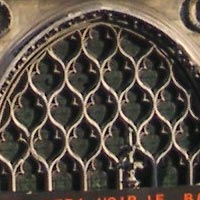 |
|
Economy (0.5Mb) |
|
 |
|
Chromatic Aberrations
The Konica Minolta DiMAGE X50 did not deal very well with chromatic aberrations, which appeared in any high-contrast situation when the sun was either in or just outside the frame. You can clearly see strong purple fringing in the examples below.
|
Example 1 |
Example 2 |
 |
 |
|
Example 3 |
Example 4 |
 |
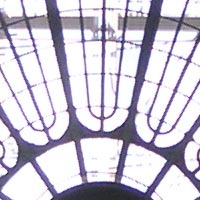 |
Macro
The Konica Minolta DiMAGE X50 has a Macro setting that allows you to focus on a subject that is just 6cms away from the camera. This can introduce other problems, such as the shadow of the camera getting in the picture and softness in some parts of the image if a large aperture is chosen by the camera.
|
Macro Shot (click to view full-sized image) |
100% Crop |
The first image shows how close you can get to the subject whilst still being able to auto-focus (in this case a compact flash card). The second image is a 100% crop.
Flash
The flash settings on the Konica Minolta DiMAGE X50 are pretty standard - Auto/Forced/Off/Red-Eye Reduction. These shots of a white wall were taken at a distance of 1.5m.
|
Flash Off |
|
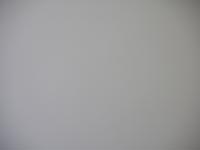 |
|
|
Auto Flash - Wide Angle (37mm) |
Auto Flash - Telephoto (105mm) |
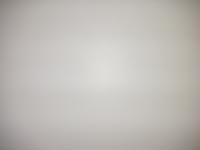 |
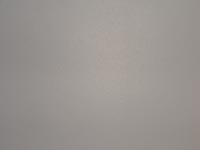 |
As you can see, the flash isn't very powerful either at the wide angle or telephoto setting, and the lens displays obvious vignetting in the corners of the image.
And here are some shots of yours truly. As you can see, the Flash On setting caused a small amount of red-eye, with the Red-Eye Reduction option reducing it a little but also resulting in a slightly darker image overall.
|
Flash On |
Flash On (100% Crop) |
 |
 |
|
Flash - Red-Eye Reduction |
Flash - Red-Eye Reduction (100% Crop) |
 |
 |
Night Shot
The Konica Minolta DiMAGE X50 has a maximum shutter speed of 4 seconds, not really long enough if you are seriously interested in night photography. I've included a 100% crop of the image to show what the quality is like. According to the EXIF data, this shot was taken at a shutter speed of 1.5 seconds.
|
Night Shot (click to view full-sized image) |
100% Crop |
 |
|
Overall Image Quality
Disappointingly the image quality of the Konica Minolta DiMAGE X50 didn't match its great ease-of-use, producing a below-par set of test images. The 5 megapixel images were soft straight out of the camera (which can't be changed) and definitely require some post-processing in an image editing program. Noise is well controlled at the slowest ISO setting of 50, but at ISO 100 noise is evident and by ISO 200 and ISO 400 it's plain to see, making the Konica Minolta DiMAGE X50 only really suitable for bright conditions. Worse still, the camera exhibited chromatic aberrations in most high-contrast images when the sun was either in or to one side of the frame. Macro performance was good, allowing you to focus just 6cms away from the subject, but the lens displayed vignetting in the corners throughout the zoom range (particularly at the wide angle setting). The night shot was more pleasing, and using the flash indoors produced fairly good results. Overall a poor performance in terms of image quality from the Konica Minolta DiMAGE X50.
|
 PhotographyBLOG is a member of the DIWA organisation. Our test results for the Konica Minolta DiMAGE X50 have been submitted to DIWA for comparison with test results for different samples of the same camera model supplied by other DIWA member sites.
PhotographyBLOG is a member of the DIWA organisation. Our test results for the Konica Minolta DiMAGE X50 have been submitted to DIWA for comparison with test results for different samples of the same camera model supplied by other DIWA member sites.



